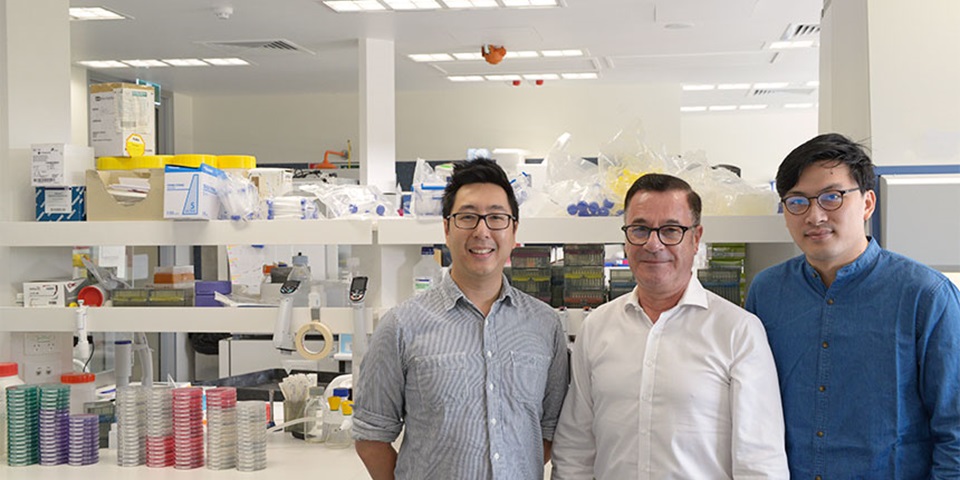News
World expert in antimicrobial resistance recognised

As we close World Antimicrobial Resistance Awareness Week, Professor Geoffrey Coombs, recently recognised as a world expert in Methicillin-Resistant Staphylococcus aureus (MRSA), discusses the threat of antimicrobial resistance to human and animal health.
Antimicrobial resistance (AMR) is one of the greatest threats to human and animal health, and to food safety, a concern recognised by the World Health Organization and the Australian Government through Australia’s National Antimicrobial Resistance
Strategy – 2020 and Beyond.
Professor Geoffrey Coombs, Chair of the Australian Group on Antimicrobial Resistance (AGAR) and Murdoch University scientist at the Harry Butler Institutes says working to combat antimicrobial resistance is a priority for our health system due to its
serious and growing impact on human health.
“We need to recognise the overprescribing of antimicrobials – more commonly known as antibiotics – is a major threat to public health,” Professor Coombs said.
“In Australia, we use antibiotics more than many other developed countries and sometimes these medicines are prescribed when they’re not needed, which can lead to more bacteria developing resistance.
“There is, for example, a large public misconception that antimicrobials can be used to treat viral infections such as a cold or flu. Taking antibiotics won’t help treat these infections – but it does increase the risks of antimicrobial
resistance and the occurrence of side effects, such as thrush and nausea.”
In Australia, AGAR, a longstanding collaboration of clinicians and scientists from major microbiology laboratories across Australia, have been targeting surveillance of selected pathogenic bacteria. As AGAR Chair, Professor Coombs has been leading research into antimicrobial resistance in bacteria that cause life-threatening infections.
Murdoch University’s Antimicrobial Resistance and Infectious Diseases (AMRID) research laboratory performs large-scale screening of human and animal pathogens, for the detection of antimicrobial virulence and resistance genes.
The laboratory has a suite of state-of-the-art molecular and non-molecular technologies including next-generation whole genome sequencing, DNA microarray, real-time PCR, and mass spectrometry technologies.
“AMRID plays play a pivotal role in increasing our understanding of antimicrobial resistance, allowing our team to efficiently analyse and report on these as part of the Antimicrobial Use and Resistance in Australia (AURA) Surveillance System,”
he explained.
The laboratory is the reference laboratory for two of the three AGAR AMR surveillance programs - the Australian Staphylococcus aureus Sepsis Outcome Program (ASSOP) and the Australian Enterococcal Sepsis Outcome Program (AESOP).
During World Antimicrobial Awareness Week, Professor Coombs was recognised as an Expertscape World Expert in MRSA, being in the top 0.1% publishing research. Also known as "Golden Staph", MRSA can cause a wide range of infections, such as boils, impetigo, wound infections bone and joint infections and bloodstream infections.
“The team at Murdoch have been pivotal in increasing our understanding of the evolution and epidemiology of MRSA in Australia,” Professor Coombs said.
“Although our research has assisted in reducing MRSA infections in hospitals, isolation of MRSA has increased in the community. While Initially confined to hospitals, our group was the first to recognise MRSA had emerged outside the healthcare setting.”
Known as community-associated MRSA (CA-MRSA), the strains were initially identified in remote indigenous communities in the Kimberley region of Western Australia.
Now isolated throughout Australia, by using comparative genome analysis the team have been able to characterise the predominate CA-MRSA clones and identify their evolution and their genetic traits which have resulted in their successful transmission.
“Compared to the Perth metropolitan health regions, we have shown the Kimberley health region experiences a 70-fold higher rate of CA-MRSA infections,” Professor Coombs said.
“Although many different strains have been identified, over the last decade a distinct lineage has emerged in Northern Western Australia, increasing the numbers of infections year on year.
“In collaboration with the Curtin University Medical School, by using comparative genome analyses we hope to establish features of this clone, which has led to the it’s pervasiveness in remote indigenous communities.”
Antimicrobial-resistant bacteria can spread rapidly between people across all settings: primary care services, hospitals, residential aged care homes and in the community.
It is important to remember the spread of these bacteria has the potential to not only significantly affect individuals, but also their communities, the health services where they receive care, and the health system as a whole.” Professor Coombs
“While our research has played a critical role in identifying, monitoring and reporting on rates of resistant bacteria with the highest risk of causing harm to humans, the fight is not over.
“We need to continue providing information and advice to support clinicians, policy makers and systems managers, so we can make positive with antimicrobial resistance and antimicrobial prescribing practices in Australia.”
This research supports the United Nations Sustainable Development Goal 3 to ensure healthy lives and promote well-being for all at all ages.